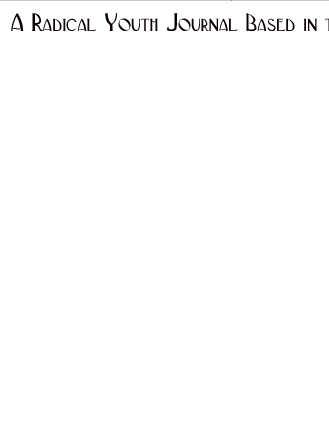|
In America, Can I Get A Whiteness?
- By Seth Sandronsky
My family began to arrive in the U.S. from Eastern Europe and Russia just over a century ago. Then as now, the capitalist system was changing people’s lives. That change disrupted my ancestors’ daily rituals and rhythms. They were part of a wave of U.S. immigrants with distinct ethnic identities who did not initially see themselves as members of a white race.
Eventually, my family whitened, as did other immigrant groups. One was the Irish who had lost their land to British invaders. For a time, Irish immigrants were seen and treated as a separate race after arriving in the U.S. Noel Ignatiev details that change In How the Irish Became White.
He casts useful light on how race in general and whiteness in particular is a contested site of struggle. In the 19th century, for example, Ignatiev reviews the non-segregated relations between black and white prisoners in Philadelphia’s Walnut Street Jail. In contrast, there is a strict racial barrier now for the mainly black and brown U.S. incarcerated population, which “has grown tenfold over the last 30 years” (NY Times, May 17, 2004).
Immigrants did not all whiten at the same time. Religion played a part in their rate of change, given that America is a Christian nation. Take elite Anglo-Saxon opinion about immigrant Jews in America being racially inferior. That changed rapidly after the Second World War. New economic policies played a part. Government spending boosted the public’s buying power. Mainly Americans with white skin benefited from the GI Bill. They included the kids of first- and second-generation immigrant Jews.
After World War II, the process of wealth accumulation got back on track from its near total breakdown during the Great Depression. The war had re-divided the world market. The U.S. became the center of the global system that accepts no permanent barriers to growth. Against that backdrop, the concept of whiteness in America adapted itself to the new order.
Further, the notion of race is a haven for the losses of humanity that people experience as wage laborers in a world market that needs more of them to grow or die (GOD). Tragically, the concept of the white race in America has been one way for some people to recapture their humanity lost in the market by depriving others of it. On that note, there is the mystification of the great American melting pot, concealing more than it reveals about inclusion into the mainstream.
This melting pot pivots on exclusion from the mainstream. W.E.B. Du Bois called this the color line. Well before my people left home to set foot on U.S. soil, the non-whiteness of enslaved Africans and dispossessed Natives was a measure of what it meant to be white. The demand for colonial labor and land drove the ideology of racial superiority and inferiority.
Then and now, to be white has meant many things relative to the labor and land questions. Significantly, skin color supplied a religious-like justification for national expansion. Some called it Manifest Destiny.
From this ideology has emerged many awful acts and thoughts. I place the
so-called neo-conservatives terror war that followed the hijacked plane attacks on the East Coast on Sept. 11, 2001, into that framework. Whole groups of people (Afghanis, Iraqis and Palestinians) who had nothing to do with those crimes against humanity have been made scapegoats by U.S. politicians who represent the ownership class of the nation.
Centuries before that fateful day, the seeds of whiteness as being not African or Native were planted. They grew with ghastly results. One was the popular ideology of a white race in America based on a negation of two distinct peoples, Africans and Natives. They are the original racialized “others” in the nation’s history. That helped to set the stage for various groups of peoples in America and abroad to have had “otherness” thrust upon them. Land and labor were and continue to be the driving forces to justify such maltreatment.
Currently, the Arab/Muslim world generally is the racialized “other” under U.S. foreign policy of the Bush 2 administration. Its style is one of “faith based” imperial power, using one religion to demonize another and justify wealth accumulation for U.S. corporations. The nation’s anti-war movement is a force opposing this trend. “No blood for Iraqi oil” nicely sums up its main idea. Humans mean more than money. This is a revolutionary stance.
In America, the term “people of color” tends to help naturalize this historical process of becoming white under the market’s thirst for more wage workers. Whites in the U.S. have color, more than a measure of one’s melanin, or race. There is, of course, only one race of people walking the earth—that of human beings whose daily energy creates their world.
This edition marks the end of our first Summer Fund Drive! Please consider supporting us by donating today if you have found this article and other Left Hook material useful.
Seth Sandronsky, 48, is a member of the Sacramento Area Peace Action and co-editor of Sacramento's progressive paper, Because People Matter. He can be reached at: ssandron@hotmail.com
|





